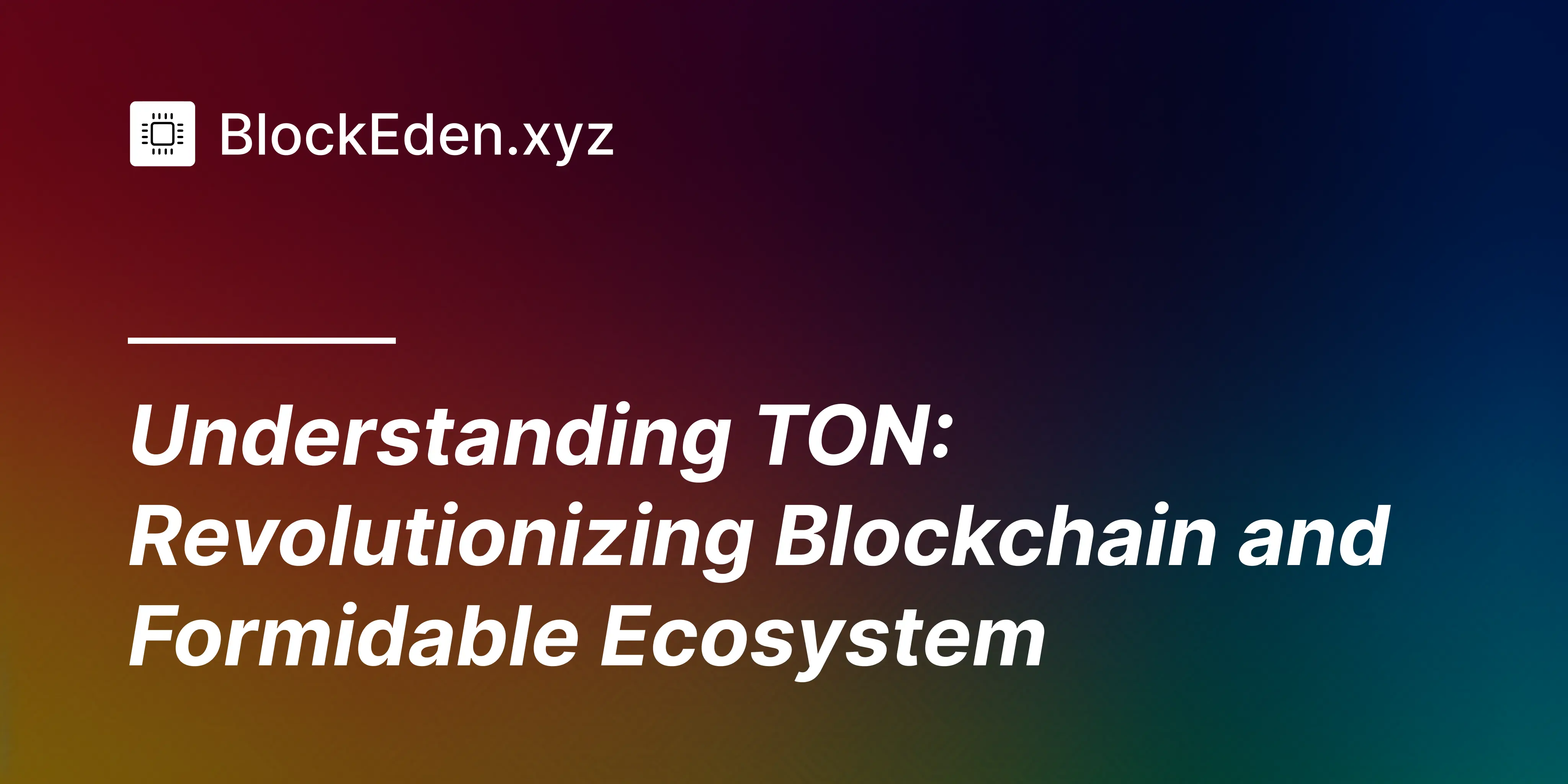Understanding TON: Revolutionizing Blockchain and Formidable Ecosystem
Telegram, a popular cross-platform IM tool, created by Pavel Durov, launched TON (Telegram Open Network) in 2013. With 1.8 billion users and 70 billion daily messages, TON has raised $850 million through ICO for its development. This blog delves into TON’s unique technical features and services.

Chain Specs
TON (Telegram Open Network), as outlined in its whitepaper, classifies all public blockchains along five dimensions:
- Single-chain vs. multi-chain
- Smart contract support
- Consensus mechanism
- Sharding support
- Chain interconnectivity
Multi-Chain Blockchain System
TON is not a single-chain blockchain but a collection of multiple blockchains, including Masterchain, Workchains, and Shardchains.
- Masterchain: The core of TON’s blockchain system, storing essential information and parameters. It records validators, their token holdings, active Workchains, and Shardchains. The Masterchain contains the latest block hashes of all Workchains and Shardchains, ensuring overall coordination and security.
- Workchains: Up to 2^32 Workchains can exist, each handling fund transfers and smart contract interactions. Workchains can have different rules, such as account address formats, transaction formats, smart contract types, and virtual machines. Despite their differences, they must adhere to interoperability standards to enable smooth interaction.
- Shardchains: These are subdivisions of Workchains, designed to improve processing efficiency by distributing tasks among multiple Shardchains. Shardchains follow the rules of their respective Workchains and automatically split or merge based on load, ensuring scalability and performance optimization.
TON Virtual Machine (TVM)
TVM is a program execution environment running on the blockchain, primarily for executing smart contracts. In TVM, everything is built out of cells and there is TVM that is instantiated for each contract every time.
- Data Storage: TVM stores data in cells, each containing up to 128 bytes and references to other cells. This structure allows flexible data handling.
- Data Handling: TVM can manage various data types, using a stack-based structure for efficient computation.
- Built-in Functions: TVM includes tools like hash tables, encryption (elliptic curves), hash functions (e.g., SHA256), and Merkle proof mechanisms, ensuring data security and integrity.
- Large Smart Contract Support: TVM can handle complex and large smart contracts, accommodating dynamic sharding.
- Programming Languages: TVM supports FunC, Fift, and Tact, each tailored for different needs.
- Additional Features: TVM supports closures and efficiently executes complex tasks.
Infinite Dynamic Sharding
Unlike traditional top-down sharding, TON employs a bottom-up approach. It envisions extreme sharding, where each shard is an account chain. These account chains form larger Shardchains, which connect to the Masterchain, creating a scalable and flexible system.
TON’s dynamic sharding adjusts shard numbers based on load. If a shard’s load is high, it splits; if low, it merges. This dynamic adjustment ensures load balancing, performance optimization, and resource utilization.
BFT PoS Consensus Mechanism
TON uses a BFT PoS consensus mechanism, combining Byzantine Fault Tolerance (BFT) and Proof of Stake (PoS).
- BFT: An algorithm handling Byzantine faults, ensuring system consistency despite up to one-third of nodes failing.
- PoS: Nodes with more tokens have a higher chance of validating transactions and generating blocks, incentivizing security.
Roles in TON’s PoS Mechanism:
- Validators: Nodes maintaining network security and validating transactions by staking 300,000 TON tokens.
- Nominators: Entities providing stake to validators, sharing in the rewards if the validator performs well.
Tight-Coupling Chain Interactivity
TON’s tightly-coupled system ensures fast message passing and consistency across all blockchains. Features like embedding Shardchain block hashes in Masterchain blocks and using vertical blockchains for error correction help achieve this.
Vertical Blockchain Mechanism: When an invalid block is detected, a corrected block is added vertically, preserving valid parts and reducing disruption.
Hypercube Routing: Messages traverse a hypercube network, ensuring accurate and swift delivery across Shardchains.
TON Services
TON DNS: Provides name mapping for blockchain accounts, smart contracts, and services, making DApp usage as convenient as traditional internet domains.
TON Proxy: An anonymous network proxy service that hides TON node IP addresses, similar to I2P, creating a decentralized VPN service.
TON Storage: A distributed storage system akin to IPFS, using P2P networks for file storage. It supports complex DApp storage needs, such as video streaming.
TON Pay: Integrated micropayment channels for instant off-chain transactions, ensuring secure and efficient payments for all DApps on TON.
Token Economy
TON’s token, Gram, has a total supply of 5 billion, with a portion mined and a fraction allocated to reward DApp developers. A unique pricing mechanism prevents volatility, maintaining economic stability and fostering a sustainable ecosystem.
Stats
- TVL: $705M
- Daily Active Wallets: 320K
- Daily Tx: 4.2M
Conclusion
TON offers a full-featured blockchain operating system, aiming to surpass platforms like Ethereum and EOS. Its innovative design and comprehensive services make it a formidable player in the blockchain arena. Join the revolution with BlockEden.xyz, where we provide cutting-edge solutions for content creators and developers alike.
- Twitter: https://twitter.com/BlockEdenHQ
- Discord: https://discord.gg/eWZvE4RSBw
- Source Link: https://blockeden.xyz/blog/2024/07/08/ton/